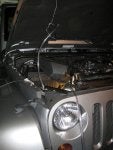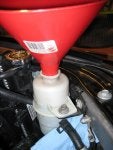Hi there,
My liberty is getting to the point where its time to flush out the Power Steering Fluid but I can't seem to find a "How to". I looked through my Haynes manual and they talk about bleeding the system to remove air but nothing on how to just replace the fluid. Is it just a matter of replacing the fluid in the reservoir? If so that seems like you are doing half the job.
Thanks for the help
My liberty is getting to the point where its time to flush out the Power Steering Fluid but I can't seem to find a "How to". I looked through my Haynes manual and they talk about bleeding the system to remove air but nothing on how to just replace the fluid. Is it just a matter of replacing the fluid in the reservoir? If so that seems like you are doing half the job.
Thanks for the help













